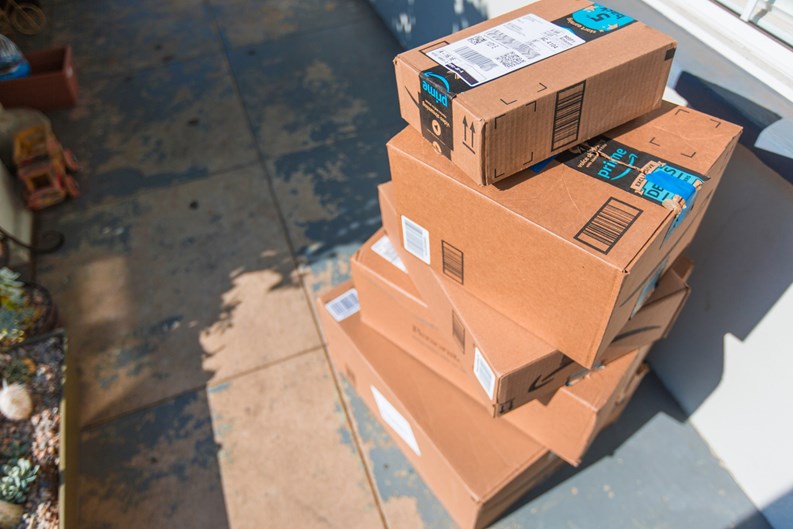The ever-increasing popularity of online commerce has changed people's shopping habits -- including the way apartment dwellers receive their deliveries. While concierges, doormen, and building superintendents have traditionally accepted packages on behalf of residents, the management and storage of those packages is evolving.
The Land That Time Forgot
One of the nicest aspects of living in a full-service apartment building is the seamless way in which life’s everyday drudgeries are efficiently taken care of. Household garbage disappears from service hallways without drawing attention. Maintenance and domestic workers arrive via the service elevator, never crossing paths with residents. And mail and packages are accepted by the doorman or concierge and sorted and delivered to apartment doorways.
Daniel Wollman, CEO of Gumley Haft, a New York-based residential property management firm, says those day-to-day functions haven’t changed in the rarefied world of top-shelf co-ops and condos. “In higher-end properties where there is a full staff,” he explains, “where there are two or three apartments per floor, packages are still delivered directly to apartment doors. In those cases, not much has changed, other than that the staff makes more trips up and down.”
Package Pile-up
But in more mid-range properties, that’s not the case. Package rooms, usually adjacent to or near lobbies, are operating past capacity. Those packages pile up, and some co-op and condo communities don’t like the look -- or the potential for fragile items to be damaged if they settle to the bottom of the pile.
“We have seen some redesign of existing package rooms,” says Wollman, “either to make them bigger or more efficient, with more shelving for instance. Today, a lot of packages are small. We also see buildings buying refrigerators for FreshDirect-type deliveries. The refrigerators are usually placed in the basement, where there is more room than in the lobby areas.”
To reduce the number of boxes in their lobbies, “Some buildings have placed storage locker cages in their basements,” he adds. “If you’re out of town, all your packages wait for you downstairs until you return. Previously, we would have left everything in the package room off the lobby. The need for the locker is a result of the increased volume in packages.”
When There’s No Doorman
Many co-ops and condos operate without the benefit of a security staff. In the past, packages were routinely left with the super. The large numbers of deliveries has created a need for change in these buildings as well.
“The increase is substantial,” says Greg Cohen, President of Impact Management, a co-op and condo management firm with offices in Manhattan, Queens, and Westchester. “It could be 1,000 percent over the past five years and will continue to grow.”
In non-doorman buildings, “boards are doing a few things to alleviate this problem,” says Cohen. “They buy storage lockers, which are then coordinated with the post office, FedEx, and UPS for deliveries. They are also converting underused spaces into storage rooms specifically for deliveries.” In the case of storage lockers, the packages are delivered to the locker and the resident gets a code sent to them to retrieve the package. As for a community-wide storage room, residents have a key to gain admittance and retrieve their packages.
Theft
One of the unfortunate side effects of the increase in deliveries, especially in buildings without doorman and other security staff, is an increase in thefts of packages left in lobbies. Believe it or not, Cohen explains, a lot of the package thefts were perpetrated by food delivery people. “We have security cameras, so we saw it,” he says. That’s not to say that all, or even many, food delivery couriers are thieves, of course -- but that theft does occur, and is often a crime of opportunity. Some level of security is necessary, especially where no security personnel are present.
Cohen also mentions that in some doorman buildings where there is no additional support security staff, the increase in deliveries has affected the use of the doorman’s time. Cataloging and storing the packages pulls the doorman off the door, leaving gaps in security. In a scenario like that, storage lockers accessible by delivery services such as the Postal Service, UPS, and FedEx may offer a very workable solution.
How Much Does It Cost?
Installing lock boxes or lockers, or reconfiguring existing spaces to accommodate the increase in deliveries, can be expensive. Cohen says lock boxes or lockers can cost from $8,000 to $10,000, depending on exactly what work needs to be done. That work includes internet and electrical components to make the lockers accessible to residents using a code to gain access.
Wollman relates a story of a property in Manhattan that wanted to build a new package room. The only available space nearby the lobby required reconfiguring a fire stair at the back of the first floor. In the end, the cost of said work would run more than $100,000. The board decided to live with the pile of boxes on a bench in the lobby.
The number of package deliveries can be expected to grow into the foreseeable future. Thus, co-op and condo boards will most likely continue to adapt to these changing conditions by employing new technologies in order to keep packages safe and secure.
AJ Sidransky is a staff writer at The Cooperator, and a published novelist.





Leave a Comment